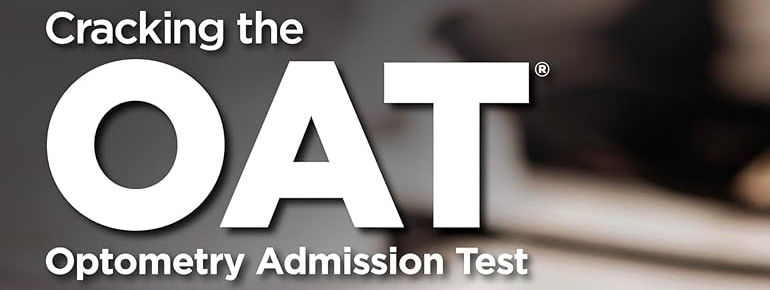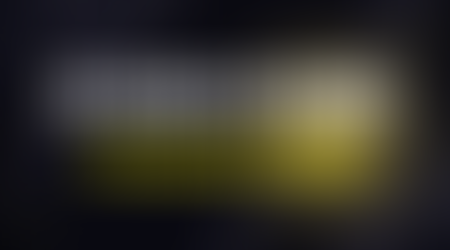Optometry Admission Test (OAT) Preparation – Study Guide & Success Tips
- Rahul Subuddhi
- Aug 18
- 8 min read

Ever felt like your brain’s juggling textbooks and caffeine at the same time just thinking about the OAT (Optometry Admission Test)? Relax—it’s not a punishment from the academic gods. It’s simply the standardized exam that opens the door to your dream of becoming an optometrist.
Think of the OAT as your “entry pass” to the world of eyes—without it, you don’t even get to stand in the line for optometry school. Run by the American Dental Association (ADA) in collaboration with the Association of Schools and Colleges of Optometry (ASCO), this exam isn’t random—it’s carefully designed to test whether you can handle the demands of a professional program.
👉 Official site: oat.ada.org
Now, grab your virtual notebook, because we’re diving deep into everything you need to know: structure, subjects, challenges, strategies, and (of course) how Dr. Sourav Sir’s Classes can be your game-changer.
🔎 What Exactly Is the OAT?
The Optometry Admission Test (OAT) is a standardized, multiple-choice exam taken by students applying to optometry schools in the United States and Canada. Unlike random high school quizzes, the OAT is computer-based and evaluates your skills in science, math, reading, and physics—all the foundational areas optometry schools know you’ll need.
It’s basically the SAT for optometrists, only longer and heavier on science.
Who conducts it? American Dental Association (ADA)
Who accepts it? All accredited optometry schools in the U.S. and Canada
When can you take it? Year-round, by appointment at Prometric test centers
Scoring range? 200–400 (300 is average; 350+ is competitive)
🧪 The OAT Test Structure (Breakdown by Section)
The OAT isn’t a short sprint—it’s a marathon for your brain. Total exam time is ~5 hours, including breaks. Here’s the play-by-play:
1️⃣ Survey of Natural Sciences (100 Questions | 90 Minutes)
Biology (40 Qs): Cell structure, genetics, physiology, ecology.
General Chemistry (30 Qs): Atomic structure, bonding, stoichiometry.
Organic Chemistry (30 Qs): Nomenclature, reactions, stereochemistry.
🧩 Why it matters: Optometry schools need to see that you’ve got strong science fundamentals, since the field is deeply biology- and chemistry-based.
2️⃣ Reading Comprehension (40 Questions | 50 Minutes)
3 passages from scientific/technical texts.
Questions test your ability to analyze, interpret, and evaluate information.
🧩 Why it matters: Optometrists spend a lot of time interpreting research and understanding medical literature. This section checks if you can process complex texts without falling asleep.
3️⃣ Physics (40 Questions | 50 Minutes)
Topics include mechanics, fluids, optics, thermodynamics, and electricity.
🧩 Why it matters: Physics is at the heart of optics—the very science of vision correction. If you don’t understand lenses, you can’t prescribe them.
4️⃣ Quantitative Reasoning (40 Questions | 45 Minutes)
Covers algebra, probability & statistics, geometry, and word problems.
🧩 Why it matters: Optometrists deal with data, measurements, and quick problem-solving every single day.
👉 Grand Total: 280 questions, ~5 hours, and a lot of brainpower.
Optional 30-minute break halfway through—use it wisely (pro tip: caffeine + stretching, not Netflix).
🎯 Why the OAT Is So Important
Some students think, “It’s just another test.” Wrong! Here’s why the OAT is a big deal:
🎓 Mandatory for Admission – Every accredited optometry school requires it.
📈 Measures Academic Readiness – Schools want proof you can handle heavy science coursework.
🏆 Competitive Edge – A high OAT score can set you apart in a crowded applicant pool.
🔮 Future Prep – The skills you master here (time management, endurance, problem-solving) will follow you into optometry school.
In short, your OAT score = your optometry school ticket.
🤯 Common Challenges Students Face
Let’s be honest—the OAT isn’t easy. Students often stumble on:
📚 Covering a Wide Syllabus: Four major sections, all with detailed subtopics.
⏰ Time Management: Five hours sounds long, until you’re racing the clock on every question.
🧠 Balancing Depth and Strategy: Do you focus on memorizing formulas, or practicing timed tests? (Spoiler: both).
😰 Exam Anxiety: Stress can cloud even the brightest minds.
🔄 Retake Pressure: While you can retake, each attempt costs $$$ and time.
But here’s the good news: every challenge has a proven strategy—especially with the right mentor guiding you.
🌟 Why Choose Dr. Sourav Sir’s Classes for OAT Prep?
This is where Dr. Sourav Sir’s Classes comes in. We don’t just “teach”—we help students build strategies to master competitive exams like the OAT.
Here’s what makes us different:
✅ Personalized Coaching – No cookie-cutter lectures. We identify your weak points (be it organic chemistry or physics) and customize lessons to strengthen them.
✅ Expert Faculty – Learn from experienced educators who break down tough concepts into simple, practical explanations. (Organic chemistry won’t feel like an alien language anymore).
✅ Practice-Oriented Learning – Regular mock tests, past paper analysis, and real exam simulations ensure you’re never caught off-guard on test day.
✅ Flexible Online Classes – Busy schedule? No problem. Our classes are available at your convenience, accessible from anywhere.
✅ Proven Results – Our students consistently secure high scores and admissions into top professional schools worldwide.
Think of us as your GPS to OAT success—guiding you from confusion to clarity.
📝 Tips to Ace the OAT (Straight from the Experts)
Start Early: Give yourself at least 3–6 months of prep time.
Master the Basics: Without strong fundamentals, advanced practice won’t stick.
Use Official Resources: Check oat.ada.org for practice tests.
Simulate Exam Conditions: Practice full-length tests to build stamina.
Analyze Mistakes: Every wrong answer is an opportunity to improve.
Stay Consistent: Daily study beats last-minute cramming.
Seek Guidance: A mentor can save you months of wasted effort.
💡 Final Thoughts
The OAT isn’t just another test—it’s the first step in your optometry career. Sure, it’s long, detailed, and a little intimidating, but with the right preparation, you can absolutely crack it.
And remember—you don’t have to do it alone. With Dr. Sourav Sir’s Classes, you get personalized guidance, exam strategies, and the confidence to face test day like a pro.
👉 Ready to begin your journey to optometry school? Start today with www.souravsirsclasses.com and see your OAT fears vanish. 20 OAT Practice Questions with Explanations
🔬 Biology (5 Questions)
Q1. Which organelle is primarily responsible for ATP production in eukaryotic cells?
A) Ribosome
B) Nucleus
C) Mitochondria
D) Endoplasmic Reticulum
Answer: C – Mitochondria
Explanation: Known as the “powerhouse of the cell,” mitochondria generate ATP through cellular respiration. Ribosomes make proteins, not ATP.
Q2. Which stage of mitosis involves the alignment of chromosomes at the cell’s equator?
A) Prophase
B) Metaphase
C) Anaphase
D) Telophase
Answer: B – Metaphase
Explanation: During metaphase, chromosomes align at the metaphase plate. Anaphase follows, pulling chromatids apart.
Q3. Which of the following is an example of allopatric speciation?
A) Two populations diverge after a geographic barrier separates them
B) Two populations evolve different mating calls in the same habitat
C) A mutation leads to a new trait in a population
D) A single population remains unchanged over generations
Answer: A – Geographic barrier separation
Explanation: Allopatric speciation occurs when physical barriers (like mountains/rivers) isolate populations, leading to speciation.
Q4. Which of the following structures is NOT part of the human nephron?
A) Bowman's capsule
B) Loop of Henle
C) Glomerulus
D) Seminiferous tubules
Answer: D – Seminiferous tubules
Explanation: Seminiferous tubules are part of testes (sperm production), not kidney.
Q5. Which of the following macromolecules provides the most energy per gram?
A) Carbohydrates
B) Proteins
C) Lipids
D) Nucleic acids
Answer: C – Lipids
Explanation: Lipids provide ~9 kcal/g, while carbohydrates and proteins provide ~4 kcal/g.
⚗️ General & Organic Chemistry (5 Questions)
Q6. Which gas law relates volume and temperature at constant pressure?
A) Boyle’s Law
B) Charles’s Law
C) Gay-Lussac’s Law
D) Avogadro’s Law
Answer: B – Charles’s Law
Explanation: Charles’s Law:
𝑉
∝
𝑇
V∝T (at constant pressure). Boyle’s Law is
𝑃
∝
1
/
𝑉
P∝1/V.
Q7. Which of the following compounds is aromatic?
A) Cyclobutane
B) Benzene
C) Cyclohexane
D) Butane
Answer: B – Benzene
Explanation: Benzene has delocalized π electrons (Hückel’s rule: 4n+2 = 6 electrons).
Q8. What is the pH of a 0.001 M HCl solution?
A) 1
B) 2
C) 3
D) 4
Answer: C – pH = 3
Explanation: pH = –log[H⁺] = –log(10⁻³) = 3.
Q9. In an SN1 reaction, the rate-determining step involves:
A) Nucleophile attacking the substrate
B) Formation of the carbocation
C) Leaving group departure + nucleophile attack simultaneously
D) Proton transfer
Answer: B – Formation of carbocation
Explanation: SN1 is unimolecular; slowest step is leaving group departure → carbocation formation.
Q10. Which of the following has the highest boiling point?
A) CH₄
B) NH₃
C) CO₂
D) O₂
Answer: B – NH₃
Explanation: Hydrogen bonding in NH₃ increases boiling point compared to nonpolar gases.
🔭 Physics (5 Questions)
Q11. A lens with focal length 20 cm has a power of:
A) +2.5 D
B) +5 D
C) +10 D
D) +20 D
Answer: B – +5 D
Explanation: Power (in diopters) = 100 / focal length (cm). Here, 100/20 = 5 D.
Q12. Which of the following quantities is a scalar?
A) Velocity
B) Force
C) Work
D) Acceleration
Answer: C – Work
Explanation: Work = Force × Distance (dot product), has magnitude but no direction.
Q13. Light enters from air (n=1) into glass (n=1.5). If incident angle = 30°, what is refracted angle?
A) 19.5°
B) 20°
C) 30°
D) 45°
Answer: A – 19.5°
Explanation: Snell’s law:
𝑛
1
sin
𝜃
1
=
𝑛
2
sin
𝜃
2
n
1
sinθ
1
=n
2
sinθ
2
. → sinθ₂ = (1/1.5) × sin30° = 0.333 → θ₂ ≈ 19.5°.
Q14. A 10-kg mass is lifted vertically by 2 m. Work done = ? (g = 10 m/s²)
A) 10 J
B) 20 J
C) 100 J
D) 200 J
Answer: D – 200 J
Explanation: Work = mgh = 10 × 10 × 2 = 200 J.
Q15. A circuit has R = 10 Ω, V = 20 V. Current = ?
A) 0.5 A
B) 1 A
C) 2 A
D) 5 A
Answer: C – 2 A
Explanation: Ohm’s Law: I = V/R = 20/10 = 2 A.
🔢 Quantitative Reasoning (3 Questions)
Q16. If a fair die is rolled twice, what is the probability of getting a sum of 7?
A) 1/6
B) 1/12
C) 1/36
D) 1/18
Answer: A – 1/6
Explanation: Outcomes = 36. Favorable = (1,6), (2,5), (3,4), (4,3), (5,2), (6,1) → 6/36 = 1/6.
Q17. Solve: If x² – 9 = 0, then x = ?
A) ±2
B) ±3
C) ±4
D) ±9
Answer: B – ±3
Explanation: x² – 9 = 0 → x² = 9 → x = ±3.
Q18. A train travels 60 km in 1 hour and 30 minutes. What is its average speed (km/h)?
A) 30
B) 40
C) 45
D) 60
Answer: B – 40 km/h
Explanation: Time = 1.5 h. Speed = Distance / Time = 60 / 1.5 = 40 km/h.
📖 Reading Comprehension (2 Questions)
Passage (short):
“Optometry, unlike ophthalmology, focuses primarily on vision correction and eye health maintenance rather than surgical treatments. Optometrists prescribe corrective lenses, detect ocular diseases, and provide preventive eye care.”
Q19. Based on the passage, which is true?
A) Optometrists perform complex surgeries.
B) Optometry is entirely unrelated to eye health.
C) Optometrists prescribe corrective lenses and detect diseases.
D) Ophthalmologists only prescribe glasses.
Answer: C – Optometrists prescribe corrective lenses and detect diseases.
Explanation: Passage clearly states optometrists handle correction + disease detection, not surgeries.
Q20. The main purpose of the passage is to:
A) Describe the surgical role of ophthalmologists
B) Compare optometry and ophthalmology
C) Explain how to become an optometrist
D) Promote vision correction products
Answer: B – Compare optometry and ophthalmology
Explanation: Passage contrasts optometry (non-surgical, corrective care) with ophthalmology (surgical).



_edited.jpg)


































I came across Sudoku Game Online a few days ago and got instantly interested. The puzzles are structured really well, keeping things challenging. I liked the clean interface which makes the game easy to follow. It’s relaxing but still keeps me thinking. After that, I switched to Dragon Tiger.
Understanding the Risks: The Legalities of Purchasing FFXIV Gil
Final Fantasy XIV (FFXIV) is a beloved MMORPG that has captured the hearts of players worldwide. With its immersive storytelling, captivating gameplay, and expansive world, players often seek to enhance their experience by acquiring in-game currency—Gil. While the temptation to purchase Gil from third-party sellers can be strong, it's essential to understand the legalities and risks associated with such transactions. This article explores the implications of buying Gil, the potential consequences, and safer alternatives for accumulating in-game currency.
1. The Terms of Service
Square Enix Policies
At the core of the discussion surrounding the purchase of Final Fantasy XIV Gil is the Terms of Service (ToS) established by Square Enix, the…
hmining hmining
hmining hmining
hmining hmining
hmining hmining
hmining hmining
hmining hmining
hmining hmining
hmining hmining
hmining hmining
rmcmining rmcmining
rmcmining rmcmining
rmcmining rmcmining
rmcmining rmcmining
rmcmining rmcmining
rmcmining rmcmining
rmcmining rmcmining
rmcmining rmcmining
hmining hmining
hmining hmining
hmining hmining
hmining hmining
hmining hmining
hmining hmining
hmining hmining
hmining hmining
hmining hmining
rmcmining rmcmining
rmcmining rmcmining
rmcmining rmcmining
rmcmining rmcmining
rmcmining rmcmining
rmcmining rmcmining
rmcmining rmcmining
rmcmining rmcmining
hmining hmining
hmining hmining
hmining hmining
hmining hmining
hmining hmining
hmining hmining
hmining hmining
hmining hmining
hmining hmining
rmcmining rmcmining
rmcmining rmcmining
rmcmining rmcmining
rmcmining rmcmining
rmcmining rmcmining
rmcmining rmcmining
rmcmining rmcmining
rmcmining rmcmining